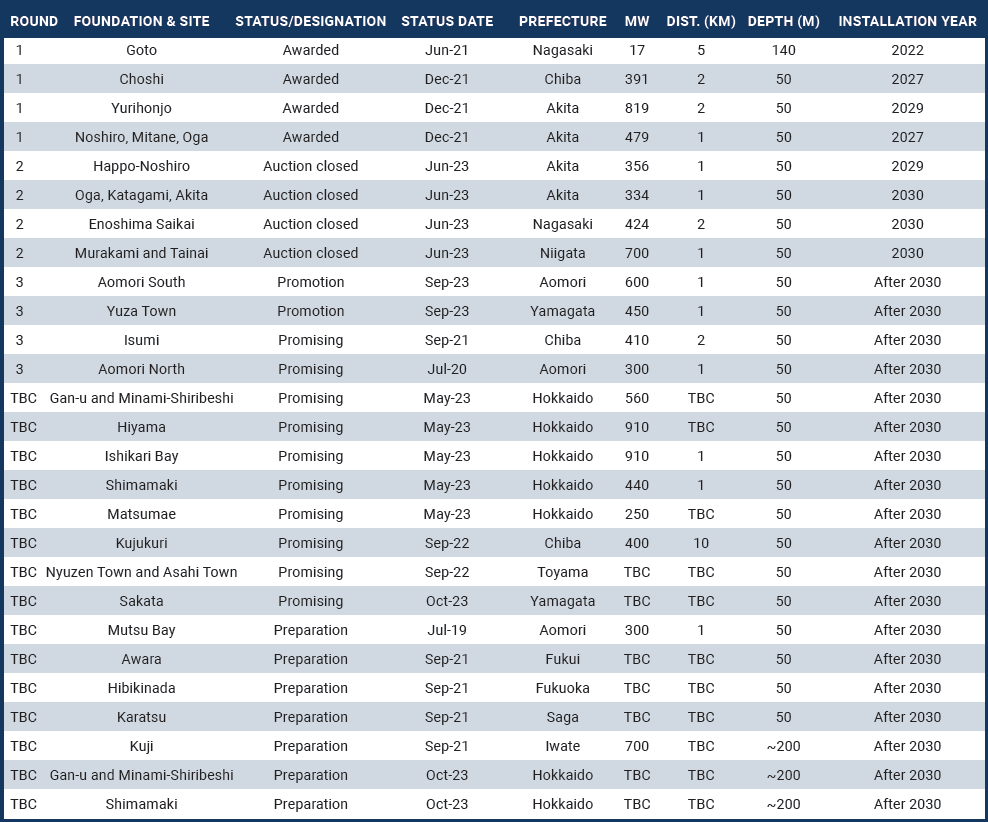Article originally published in Wind Energy Network - Issue 73, 2023 (LINK)
Written by Lilja Valtonen, TGS
Japan has a long history in maritime construction and technological innovation. The nation strives to reach net zero by 2050 and increase its energy independence through domestic energy resources, such as solar, hydropower, wind and nuclear energy.
Boasting the sixth longest coastline in the world (29,751km) and the eighth largest exclusive economic zone (4.47 million km2), the nation is a natural contender for offshore wind deployment, particularly floating wind due to its narrow continental shelf and steep slope (waters too deep for conventional fixed-bottom foundations).
Global First
It’s no surprise then that Japan was one of the first countries in the world to venture into floating wind. In 2015, when the world’s largest turbine on a fixed foundation was 7MW, the Fukushima consortium installed a 7MW turbine on a semi-submersible floater (Fukushima Shimpuu).
Local and international developers continue to express interest in the market, which has an immense amount of technical potential – the World Bank estimates a theoretical capacity of 1,897GW of offshore wind (1,775GW floating; 122GW fixed bottom). To date, 342MW of offshore
wind (19MW floating; 323MW fixed bottom) has been installed in Japan, with a further 255MW currently in construction (17MW floating wind; 238MW fixed bottom).
Regulatory Frameworks
Japan currently has two governing frameworks for the development of offshore wind farms (excluding demonstration projects). The ‘Act of Promoting Utilisation of Sea Areas in Development of Power Generation Facilities’ of 2018 governs territorial sea areas, while the ‘Port
and Harbour Act’ of 2016 governs projects within port areas. Territorial seas Under the 2018 act on marine renewable energy, the government selects sites to put to tender, also awarding offtake in the same process. To date, 27 sites have been announced (table below).
In the table, ‘MW’ refers to the minimum expected offshore wind capacity at the specific site; ‘dist. (km)’ measures the proposed windfarm area’s minimum distance from shore; and ‘depth (m)’ refers to the maximum water depth where foundations will be installed.

Continued...
Read the full article HERE.

